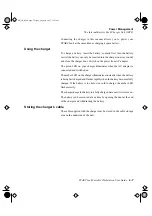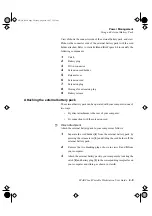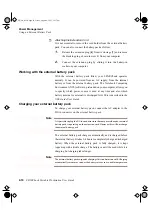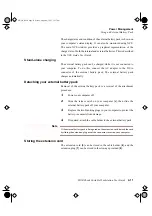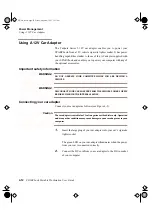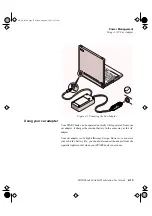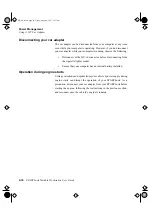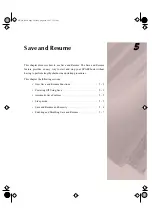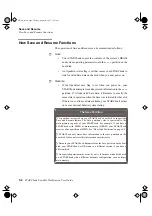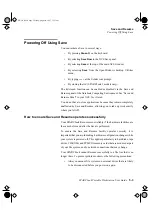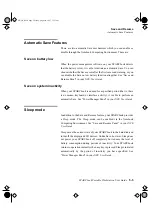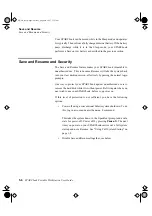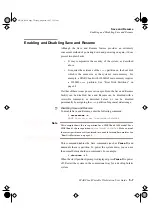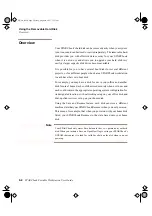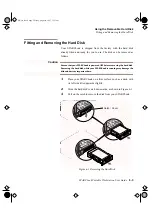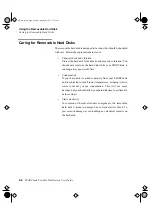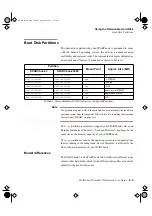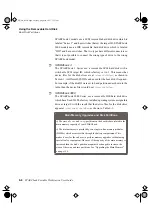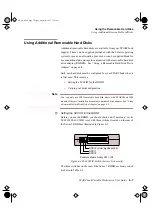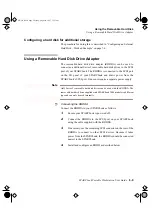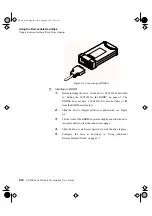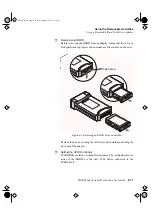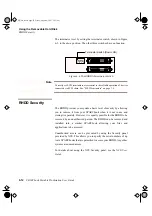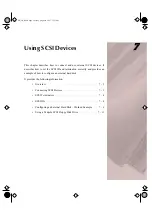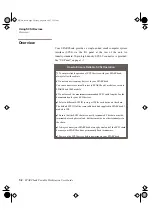
SPARCbook Portable Workstation User Guide
5-7
Save and Resume
Enabling and Disabling Save and Resume
Enabling and Disabling Save and Resume
Although the Save and Resume feature provides an extremely
convenient method of powering down and powering on again, it does
present two drawbacks.
•
It may compromise the security of the system, as described
above.
•
It requires the existence of the
save
partition on the boot disk
which is the same size as the system’s main memory. For
example, a SPARCbook with 128MB of main memory requires
a 128MB
save
partition. See “Boot Disk Partitions” on
If either of these issues poses a serious problem, the Save and Resume
facility can be disabled. Save and Resume can be disabled with a
reversible command, as described below, or can be disabled
permanently by assigning the
save
partition for general data storage.
ò
Disabling Save and Resume
To disable Save and Resume, enter the following command:
# saveresume -n
SAVE Partition was /dev/rdsk/c0t0d0s4
Note
This example shows the save partition for a SPARCbook 3000 model. For a
SPARCbook 3 the save partition is
/dev/rdsk/c0t3d0s4
. Make a note of
the correct partition to use if you intend to re-enable Save and Resume later. See
“Boot Disk Partitions” on page 6-5.
This command disables the Save commands (such as
Pause-O
) and
unmounts the save partition. To power the system down, you can use
the normal Solaris shutdown commands. For example:
# shutdown -i0
When the ok (OpenBoot) prompt is displayed, press
Pause-O
to power
off. Restart the system in the conventional way for a desktop Solaris
system.
S3UG4_Book Page 7 Friday, August 8, 1997 11:37 am

